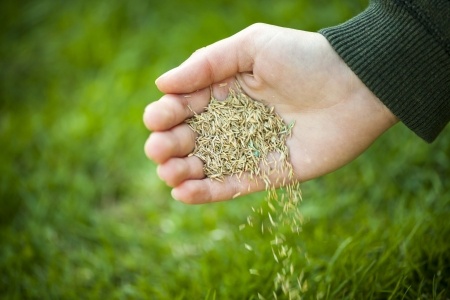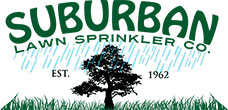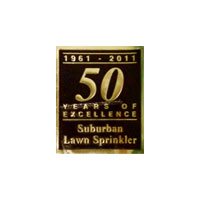
As your lawn ages, a number of factors can conspire to cause your grasses to thin and wither. Soil compaction can effectively suffocate root systems, drought can starve your lawn of water, and shade can make it difficult for certain grass species to thrive. If you find your lawn struggling with any of these issues, the process of overseeding, or adding new seed to your existing grass, can revitalize your lawn with new life.
Why Overseed
Grasses, like any other living organism, grow slower as they mature and age. Each blade has a finite lifespan, and as the grass in your lawn ages it will gradually begin to replace dead blades more slowly. By infusing your lawn with young grasses, you can speed up blade reproduction and fill out your lawn with new growth. Overseeding constitutes the easiest way to replenish your lawn with young growth.
When to Overseed
Generally, you’ll want to overseed cool season grasses such as fescue and bluegrass in the late summer or early fall. This will give the seeds a chance to germinate and take root before they go dormant for the winter. Then, in the following spring, the grasses will have the early cool months to further establish their root systems. Prior to overseeding, it’s also a good idea to core aerate your lawn. This will relieve soil compaction and increase the likelihood that seeds will take root.
How to Overseed
Overseeding is every bit as simple as it sounds. If you’re overseeding a small area, you can spread seeds by hand. For larger areas, we recommend using a rotary spreader. Spread in one direction, and then spread again in a perpendicular direction. This will give seeds the best chance of surviving.
At Suburban Lawn Sprinkler, we’ve been keeping grass healthy and green for over fifty years. Give us a call today to learn more about how a new irrigation system can bring your brown lawn back from the brink.








